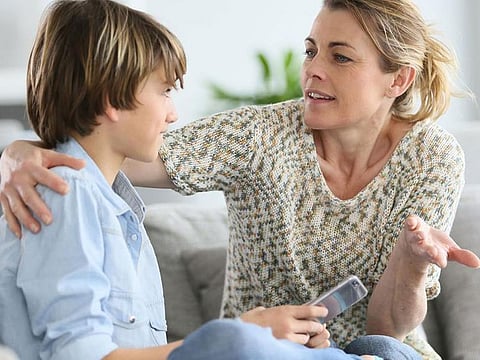5 Ways to make the internet safer for your child
Ground rules and positive principles are key to a healthy relationship with technology

With home learning still the new normal for almost half of UAE school children, many parents have had no choice but to leave their little ones alone with a screen for hours on end while they try to work from home or go to the office. But with increased screen time comes increased exposure to potential risks online, as well as the risk of our children forming an unhealthy relationship with their digital devices. “The number of ways in which children today can get online and interact with others virtually, is staggering,” says Lance Spitzner, SANS Director of Security Awareness. “From social media apps and computer games to the use of Chromebooks in schools, young people’s social lives and futures today depend on their ability to make the most of technology. As parents, we want to make sure they do so in a safe and secure manner, but this can be a challenge, as many of us never grew up in an environment where technology is so ubiquitous.”
Coronavirus resulted in the unprecedented situation where schools across the globe had to close and rapidly move to an eLearning format. In response, SANS Security Awareness, a division of the SANS Institute, is providing a free “Secure Your Kids Online” resource kit to help parents and guardians protect their children online.
SANS Director of Security Awareness Lance Spitzner explains, “eLearning from home is a new experience both for kids and their parents. With this technology, and boundless access to information and people, comes potential risks. Secure Your Kids Online was created to enable families to safely and securely make the most of learning from home by arming parents with the skills and knowledge they need to help guide and secure their children.”
Below Lance outlines some of the best ways that parents can protect their children online, particularly during these challenging times.
Know the dangers
Broadly, there are three types of danger for children online: 1) strangers; 2) family and friends; and 3) the children themselves
We tend to focus on the first, which is a danger. But quite often it is number two and number three that pose the biggest risks. When it comes to friends, we could be looking at issues like cyber bullying, sexting or promoting bad behaviour (peer pressure). For number three, the biggest risk is that, without proper education, kids can share too much about themselves online, but they can also themselves end up being the bullies. Ultimately the biggest risk for children is how they interact with and what they share with others. Unlike in the adult world, with kids, it’s generally a case of protecting their futures and their reputation and potentially their physical safety, rather than protecting data.
Set some ground rules
A good place to start is to create a list of rules or expectations with your kids on how they should use technology. Here are some things to consider:
Get savvy with parental control software
You can use technology in two ways: 1) to filter what kids do online and/or 2) to monitor what they do online. If you want to monitor everything your kids are doing, then you will most likely want to go with an Android device, as it allows you to monitor much more. On Apple iOS devices it can be much more limited. Examples of software you can get for monitoring / controlling kids devices include:
Keep in mind though, that as kids get older, it becomes harder and harder to use technology to monitor and control them, as they can access the Internet in so many different ways. However, if they have good values and good guidance from their parents, they are more likely to exhibit ethical and healthy behaviours online, just as they would in the real world.
Shape your child’s Online Values
It's important to remember that at the end of the day, you can’t outsource parenting; no technology is going to protect your kids against all dangers online. In fact, as kids get older there is less and less you can do technology wise to monitor their activity online. Ultimately, the best defence is to talk to and educate your kids about good behaviour online, and to give them guidelines and values. These guidelines and values are actually very similar to the way in which you want them to behave in the real world. You want to be sure you have a two-way dialogue between you and your children all the time. A great way to start the conversation is to put them in the role of the teacher and ask them to show and teach you what apps and games they use online and how they work. You can find some suggestions on appropriate rules and guidelines here.
Set a good example
This means that when your kids talk to you, put your own digital device down and look them in the eye. Consider not using digital devices at the dinner table and never text while driving. Finally, when kids make mistakes, treat each one as an experience to learn from instead of engaging in an immediate disciplinary action. Explain “why” each time and remind them that you are only trying to protect them from the dangers they cannot yet see. Let them know they can come to you if and when they experience anything uncomfortable online, perhaps even have them take a screenshot to share with you. Make sure they also feel comfortable approaching you when they realize they themselves have done something inappropriate. Keeping communication open and active is the best way to help kids stay safe in today’s digital world.
Read more:
Sign up for the Daily Briefing
Get the latest news and updates straight to your inbox








